BAYARD & HOLMES
~ Jay Holmes
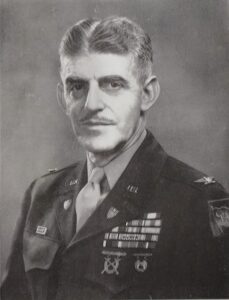
Col. Sidney F. Mashbir (Ret.), 1951
Image US Army, Public Domain
Since 2010, Bayard & Holmes have honored either an individual or a group of people from the Intelligence Community (“IC”) on October 31, our Love-A-Spook Day. This year, we add Sidney Forrester Mashbir to our pantheon of awardees alongside the likes of Ric Prado, Virginia Hall, Billy Waugh, Josephine Baker, and others. Sidney Mashbir had an intelligence and counterintelligence career that spanned the 1900s from the Mexican-American Border Wars in Arizona, to Imperial Japan, to MacArthur’s SW Pacific Command in World War II, and the red tape morass that is Washington, DC. Bureaucratic red tape plagued Mashbir throughout his years in service to the United States of America, but Mashbir managed to snatch victory from the jaws of red tape to serve his country, and he became one of the original planners of the Central Intelligence Agency (CIA).
Early Years and Arizona National Guard
Sidney Mashbir was born in the borough of Manhattan in New York City, on September 12, 1891. Sidney’s Russian immigrant father, Eliazar S. Mashbir, was a University Professor and the first Russian-speaking attorney in New York City. Sidney’s immigrant mother, Frieda Freudenthal, was also highly educated and became the postmistress of Safford. In 1894, his family moved to the wild US territory of Arizona.
 In 1904, when Sidney Mashbir was fifteen, he joined the Arizona National Guard and served as a bugler. This was at a time when the US border was subjected to raids by the likes of Pancho Villa. In that era before portable radios, buglers served more than a ceremonial function. Troops counted on bugle calls to form up and conduct various maneuvers. Even attacks were sounded by bugles, because even the loudest officer could not be heard as far away as a bugle.
In 1904, when Sidney Mashbir was fifteen, he joined the Arizona National Guard and served as a bugler. This was at a time when the US border was subjected to raids by the likes of Pancho Villa. In that era before portable radios, buglers served more than a ceremonial function. Troops counted on bugle calls to form up and conduct various maneuvers. Even attacks were sounded by bugles, because even the loudest officer could not be heard as far away as a bugle.
While serving in the Arizona National Guard, Mashbir also attended engineering school at the University of Arizona and worked as a draftsman for the City of Tucson. During this time he was promoted to lieutenant of the University Battalion of the Arizona National Guard.
Intelligence Officer of the Yuma Military District
In 1916, someone in the Arizona National Guard made a most fortuitous decision. They made Mashbir the Intelligence Officer of the Yuma Military District. The Yuma district was an active war zone in the Mexican-American Border War.
Sidney Mashbir, with next to no formal training in intelligence work, quickly became a valuable member of the intelligence staff. While with the Yuma Military District, Mashbir’s drafting and engineering practice gave him a talent for accurate mapping and land navigation across the vast, dry expanses of southern Arizona and northern Mexico.
Mashbir had great people skills, which he used to recruit and motivate members of the Papago Indian tribe. He led the Papago on successful reconnaissance missions into Mexican territory, where they obtained accurate information on the numbers and locations of Mexican troops. Also, in what was then a form of high-tech intelligence work, Mashbir and his Papago pals tapped into Mexican telegraph lines used by the Mexican government and collected communications.
Mashbir Joins the US Army
In 1916, Sidney Mashbir applied for a commission as a junior officer in the US Army. He was married at the time, and, because of that, he should only have been eligible for the reserves and not for a commission in the regular US Army. However, because of his outstanding service in the border wars and a strong personal recommendation from US Army General Frederick Funston, the US Army made a good decision. It ignored the red tape and commissioned our young hero as a lieutenant in the regular US Army. This meant that Mashbir could remain in the US Army as an officer in times of peace. The Army sent Mashbir to officer training in Leavenworth, Kansas, and after graduating from his training, he was assigned to the Twenty-second Infantry Regiment on Governors Island in New York Harbor.
US First Army Counterintelligence Team
Then someone at the US First Army headquarters made a very good decision. It assigned Mashbir to a new counterintelligence team that was being formed. At the time, intelligence and counterintelligence efforts by both the US military and the US government were miniscule. Manpower was slim, and the budget was slimmer, but Mashbir landed that posting in spite of those difficulties.
In 1917, though busy with ramping up efforts for the US involvement in World War I, the US Army recognized Sidney Mashbir’s outstanding talent for intelligence work. Mashbir received an early promotion to temporary lieutenant colonel. Such rank-leaping promotions were quite rare at the time, and in peace time, they still are.
Mashbir used his new-found authority to publish a manual for counterintelligence work, Provisional Rules for Counter Espionage, Eastern Department, which became a model for future counterintelligence manuals until World War II. He also penned a shorter book, Ten Lessons in Bayonet Fighting.
His small counterintelligence team conducted a successful operation and caught the first German spy to be apprehended in the US, Paul Otto Kuhn*. Kuhn had been busy organizing spy rings and potential saboteurs for the Kaiser and reporting back to Germany on coastal artillery positions in the US. Mashbir and his team caught Kuhn before he could do serious damage.
Posted in Japan, Mashbir Breaks a Taboo
After World War I, Mashbir took up the study of Japanese. As a captain in the US Army, he requested a posting to the US Embassy in Japan. Once again, the US Army made a very good decision. In 1920, it assigned Mashbir to a four-year posting in one of four US Army positions in Japan.
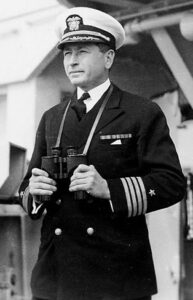
Captain Ellis Mark Zacharias
Image Fair Use
When Sidney Mashbir arrived in Japan, he also made a very good decision. He ignored inter-service rivalries and the deep-seated resistance to inter-service cooperation, and he reached out to the slightly larger US Navy staff at the US Embassy in Japan. Mashbir and an experienced Naval Intelligence Officer, Lieutenant Commander Ellis M. Zacharias, formed a strong friendship and pooled their meager resources to work together on intelligence. In spite of their scant resources, they managed to make important contacts in Japanese business circles and with members of the Japanese government.
This does not mean that all those businessmen and members of the Japanese government with whom they connected were actively spying against Japan. It means that those contacts were willing to communicate with the US military staff in Japan beyond the formalities that they conducted with the US Embassy. Given the closed nature of Imperial Japanese society in 1920, that was a major breakthrough, and it led to more important dialogue between influential people in Japan and the US government.
The M Plan is Born

Sidney Mashbir, Language Officer in Tokyo, Japan, 1923
Image US Army, Public Domain
By 1922, Mashbir and Zacharias had developed important contacts with progressive members of the Japanese government, such as Prince Iesato Tokugawa and First Viscount Shibusawa Eiichi. Tokugawa was a powerful member of a peace faction of the Japanese government. Eiichi was the founder of the modern Japanese banking system and had enormous influence in both the government and business communities. Importantly, Eiichi believed in open trade with the US and Europe. From Eiichi’s perspective, Japan’s growing war in Asia was preventing long term economic growth in Japan in exchange for short term profits.
Zacharias recognized the opportunity created by Mashbir and his ability to connect with important people, and he helped Mashbir formalize a more comprehensive plan for intelligence gathering and getting information out of Japan during wartime. They named it the “M Plan.”
In order to establish a broader network of foreign businessmen in Japan who could be turned into an intelligence network in time of war, it was suggested by Mashbir’s well-meaning commander, Colonel Burnett, that Mashbir resign his commission and become a civilian businessman in Tokyo. This would give him cover to better put his M Plan into effect. Mashbir resigned from the US Army in 1923 to pursue business interests and undercover secret intelligence operations; however, he did so with the understanding that his commission would be reinstated when his work in Japan was concluded.
Strangled by Red Tape
After the Great Kanto Earthquake on the morning of September 1, 1923. Mashbir led relief efforts to Tokyo. In doing so, he bankrupted his business holdings. However, his humanitarian efforts cemented many important friendships in the Japanese government and business communities. In order to remain in Japan and continue implementing his M Plan, he sought reinstatement in the US Army.
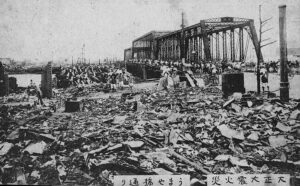
Destruction, Great Kanto Earthquake, 1923
Image Public Domain
Unfortunately, in spite of all his successes, Mashbir had unwittingly acquired detractors among the more self-promoting types in the Washington military establishment when he broke the taboo against inter-service cooperation and teamed up with Lt. Commander Zacharias.
To small-minded men, Sidney Mashbir’s inter-service cooperation was a threat to their imaginary bureaucratic kingdoms. Such destructive idiots were, and still are, common in any government. Their egoism is a deadly social disease that continues to infect our government agencies and the US military today. Members of the modern national defense community will easily recognize this disease. They deal with it frequently.
Mashbir’s mysterious enemies in DC clung tightly to their red tape and made sure that Mashbir could not be reinstated in the US Army, in spite of the understanding Mashbir had obtained before he resigned to go undercover. And so it was that, though Sidney Mashbir successfully overcame Japan’s extensive and ruthless counterintelligence efforts, he could not defeat the far more dangerous petty red tape commandos in Washington DC.
From Refrigerator Salesman to Reserve Colonel
In 1926, Sidney Mashbir returned to the depression-era United States and accepted work as a refrigerator salesman. Finally, in 1927, he was temporarily reinstated with the US Army as a reserve Intelligence Officer. He spent a year rewriting the US military’s table of organization of the Japanese military. Then, in 1928, he again left active duty in the US Army and worked as an engineer.
In 1936, Mashbir returned to Tokyo as a reserve colonel in US Army Intelligence, and with the help of his friend, now US Navy Commander Zacharias, he began to reactivate his M Plan. Mashbir’s frequent contacts with so many influential members of Japan’s government and industry made US military attachés nervous, and it made the always-nervous State Department careerists in Tokyo even more nervous. These nervous attachés and bureaucrats instigated an investigation into Mashbir’s seemingly mysterious work.
The investigative team, with no knowledge of the M Plan, issued a negative report on Mashbir, and, once again, our hero was sidelined by bureaucracy. It is difficult to accurately calculate the consequences of this terrible decision on the part of the US Army desk commandos and the US State Department fools. We are left to wonder whether, if Mashbir, with his significant connections in Japan, could have raised at least a partial awareness to the danger of a Japanese attack, significantly reducing US casualties and material losses at Pearl Harbor.
War Time Commission and ATIS
After the bombing of Pearl Harbor on December 7, 1941, someone in the US Army overcame the red tape commandos, and the US Army offered Mashbir a wartime commission as a reserve colonel to work in intelligence. We could forgive Mashbir if he had declined the offer in favor of a lucrative engineering position in the US. The demand for engineers at home greatly exceeded the supply. However, Mashbir once again put the interests of the US before his own interests and returned to active duty.
Mashbir spent the first months of the war organizing translation and interrogation services for General MacArthur’s SW Pacific Command. He then was temporarily transferred to Washington, DC, where he and now Captain Zacharias worked under US Navy Fleet Admiral Ernest King’s direction to form a secret plan for what eventually became the US Central Intelligence Agency.
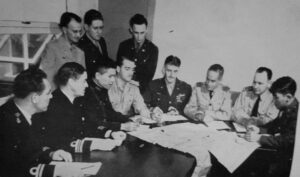
Col. Sidney Mashmir (5th from left) at
ATIS scanning conference c. 1943
Image US Army, Public Domain
When Mashbir returned to the SW Pacific Command, MacArthur had him promoted to regular US Army full colonel because of his valuable work on MacArthur’s staff. In one of the best decisions of his career, MacArthur’s Intelligence Staff Officer, Brigadier General Charles A. Willoughby, recognized that Mashbir was an exceptional organizer and his most sophisticated Intelligence Officer. Willoughby instructed Mashbir to cut the red tape and operate on his own in command of the Allied Translator and Interpreter Section (ATIS). Mashbir was to simply send Willoughby copies of his intelligence assessments after directly informing all pertinent commanders. After the war, Willoughby wrote that ATIS was “possibly the most single important intelligence agency of the war.”
When the US intercepted much of Japan’s radio transmissions concerning Japan’s “Z Plan” for the defense of the Marianas Islands, Mashbir helped to decode them and took responsibility for translating them to English. His timely work and that of the intelligence personnel under his command helped the US to achieve a lopsided victory in the Marianas against the still-formidable Japanese Navy. That defeat was the beginning of the end for the once-mighty Imperial Japanese Navy.
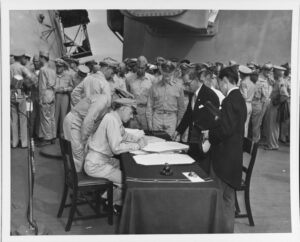
Col. Sidney Mashbir (standing center) at signing of Japanese Instrument of Surrender, Sept. 2, 1945
Image US Army, Public Domain
Retirement
In 1961, Sidney Mashbir retired from the US Army. Two years later, he published his memoirs, I Was an American Spy. However, much of the details of Mashbir’s work and that of the overall US intelligence efforts in the Pacific in WWII remain hidden today.
This is actually a good thing. Unfortunately, the American public has been trained by the media and politicians to believe all hidden intelligence operations are somehow nefarious. While it’s true that much of what is classified is done so to cover the asses of corrupt or inept politicians and bureaucrats, Mashbir’s operations remain hidden to protect his Japanese intelligence assets and their loved ones. Mashbir was gathering intelligence and running spies on behalf of the US during WWII. Japan was a very tight society at the time and remains so to this day. The people who assisted Mashbir still have families in Japan, and they would certainly at least have been shunned in the 1950s, and likely injured or killed. It is possible that some people would hold grudges to this day.
Sidney Mashbir died in 1973 and was buried at the Fort Rosecrans National Cemetery in Point Loma California. He was survived by his wife Alice, his sons Donald and Forrester, and his daughter Shirley.
14th Annual Love-A-Spook Day Honoree: Sidney Mashbir
Mashbir’s record of remarkable service stands as an enduring example of how intelligence, competence, and selfless determination can overcome ignorance, incompetence, and selfish careerists in defense of our nation. It is a tribute to the indomitable spirit of Sidney Mashbir that, in spite of the determined efforts of so many small-minded careerist bureaucrats, he was able to accomplish so much in the defense of the United States of America. The free world owes a debt of respect to Sidney Mashbir, our 14th Annual Love-A-Spook Day Awardee.
His memoir, I Was an American Spy, is available on Kindle. Click here.
* Paul Otto Kuhn is not to be confused with the notorious Bernard Otto Kuehn family NAZI spy ring of WW II.
ON SALE NOW THROUGH NOV. 12!
$2.99 eBook/$12.99 Print

What do the main intelligence agencies do and where do they operate? How do they recruit personnel? What are real life honey pots and sleeper agents? What about truth serums and enhanced interrogations? And what are the most common foibles of popular spy fiction?
With the voice of over forty years of experience in the Intelligence Community, Bayard & Holmes answer these questions and share information on espionage history, firearms of spycraft, tradecraft techniques, and the personalities and personal challenges of the men and women behind the myths.
Though crafted with advice and specific tips for writers, SPYCRAFT: Essentials is for anyone who wants to learn more about the inner workings of the Shadow World.
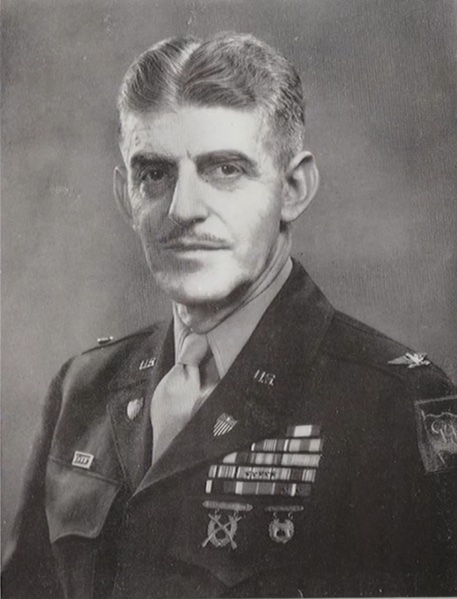
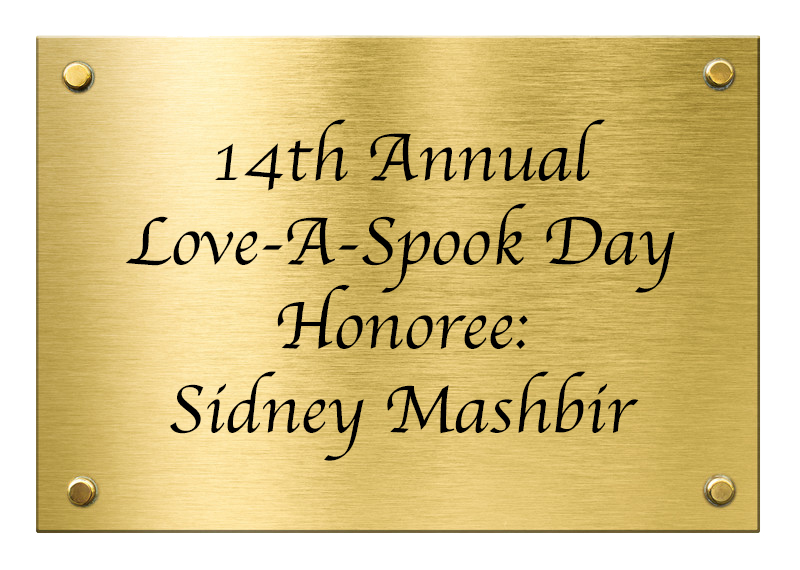
Recent Comments